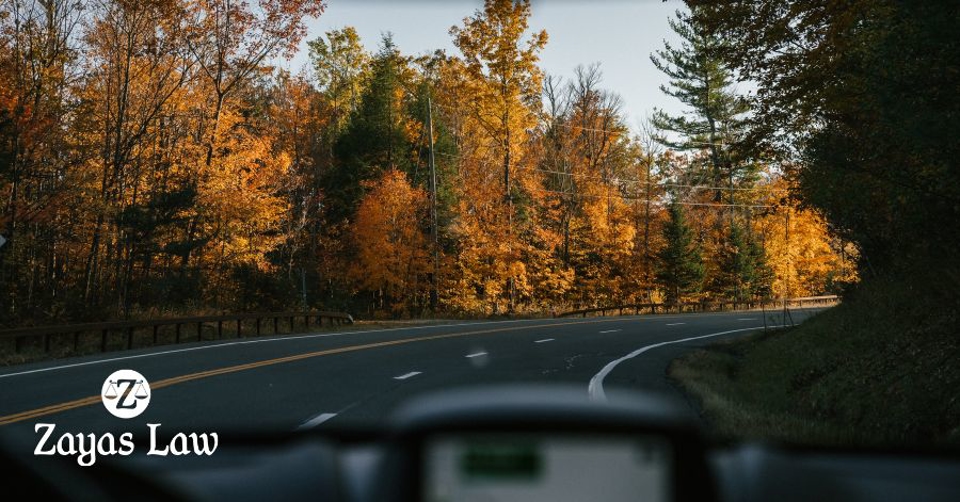Driving at night is nine times more likely to lead to a fatal crash than daytime driving. Daylight savings time is soon coming to an end (on November 3rd), which means it will get darker earlier in the day. Drivers should prepare for this transition, as they may spend more time driving in darker hours, at night.
Driving at Night Can Be Dangerous
Driving at night poses several unique challenges and risks:
- Reduced visibility: Darkness significantly limits a driver's ability to see the road, other vehicles, pedestrians, and potential hazards. This reduced visibility narrows the driver's field of view and makes it harder to spot dangers in time to react. Objects and obstacles that would be easily noticeable during daylight can be nearly invisible at night.
- Glare from oncoming headlights: Bright headlights from oncoming traffic can temporarily impair vision and make it difficult to judge distances. This effect, known as night blindness, can last for several seconds after exposure, during which time a driver may be essentially driving blind. The problem is often exacerbated by dirty windshields or improperly aimed headlights.
- Fatigue: Many drivers are more tired at night, especially during late hours, which can lead to slower reaction times and decreased alertness. The body's natural circadian rhythms make us feel sleepy at night, and this drowsiness can be dangerous behind the wheel. Long trips or monotonous driving conditions can compound this fatigue.
- Impaired drivers: There's a higher likelihood of encountering drunk or impaired drivers at night, particularly on weekends. People who have been drinking or using drugs are more likely to be on the road after dark, especially after bars close. This increases the risk of unpredictable and dangerous behavior from other drivers.
- Wildlife activity: Many animals are more active at night, increasing the risk of collisions. Deer, for example, are often most active at dawn and dusk, which coincides with reduced visibility for drivers.
- Depth perception: It's harder to judge distances and speeds in the dark. Without the visual cues provided by daylight, drivers may misjudge how far away other vehicles are or how quickly they're approaching. This can lead to poor decisions about when to turn, change lanes, or brake.
- Less traffic: While fewer cars on the road might seem positive, it can lead to complacency and higher speeds. With open roads, drivers may be tempted to speed or pay less attention to their surroundings. Additionally, the psychological comfort of having other cars around is removed, which can affect some drivers' confidence and decision-making.
- Poorly lit roads: Especially in rural areas, lack of street lighting can make navigation more challenging. Drivers must rely solely on their vehicle's headlights, which may not illuminate road signs or turns until it's almost too late to react. This can be particularly dangerous on unfamiliar roads.
- Rush hour in winter: In some regions, both morning and evening rush hours occur in darkness during winter months. This combines the dangers of night driving with the stress and congestion of rush hour traffic, creating a particularly hazardous situation.
- Vehicle issues: Problems like burnt-out headlights are more apparent and dangerous at night. A malfunctioning light that goes unnoticed during the day can suddenly become a major safety issue after dark. Similarly, streaky windshields or foggy headlight covers that don't impair vision during daylight can significantly reduce visibility at night.
10 Safe Driving Tips: Nighttime Edition
You can take steps to protect yourself while driving at night:
- Make sure you use your headlights properly. Use high beams when appropriate and switch to low beams for oncoming traffic. Clean your headlights regularly and ensure they're properly aimed to maximize visibility without blinding other drivers.
- Maintain a clean windshield. Keep your windshield clean inside and out to reduce glare and improve visibility. A dirty windshield can amplify the glare from oncoming headlights and streetlights, significantly impairing your vision.
- Reduce your speed. Drive slower than you would during daylight hours to give yourself more time to react to unexpected situations. Lower speeds also reduce the distance your headlights need to illuminate for safe stopping.
- Increase the following distance. Allow more space between your vehicle and others to compensate for reduced depth perception and reaction time. This extra space provides a larger safety buffer in case you need to stop suddenly.
- Stay alert and well-rested. Avoid driving when tired, take regular breaks on long trips, and consider alternatives if you're too fatigued to drive safely. Fatigue can significantly impair your reaction time and decision-making abilities, making it as dangerous as drunk driving.
- Minimize distractions. Focus entirely on driving, avoiding phone use, eating, or other distracting activities. Nighttime driving requires more concentration, so it's crucial to eliminate anything that might take your attention away from the road.
- Watch out for wildlife. Be especially vigilant in areas known for wildlife activity, particularly around dawn and dusk. Animals are often more active during these times and can suddenly appear on the road, giving you little time to react.
- Complete regular vehicle maintenance: Keep your car in good condition, paying special attention to lights, brakes, and tires. Well-maintained vehicles are less likely to break down, which is particularly dangerous at night.
- Use lane markings as guides. When visibility is poor, use road edge lines and center lines to help navigate. These markings are often reflective and can provide crucial guidance when other visual cues are limited.
- Be prepared for emergencies. Carry an emergency kit with items like a flashlight, reflective triangles, and a first-aid kit. Being prepared can make a significant difference if you experience car trouble or an accident at night.
Injured in a nighttime driving accident? Call (860) 854-9156 to request an initial consultation with the attorneys at Zayas Law Firm.




